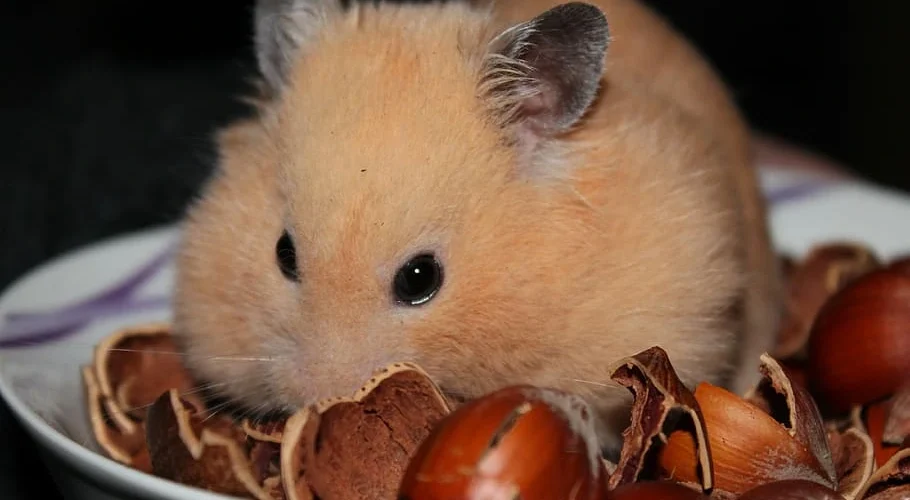Introduction To Types Of Hamsters
Hey there, fellow animal lovers! Ready to embark on a journey into the wonderful world of hamsters and types of hamsters breeds?
Well, grab your favorite snack and get cozy, because we’re about to explore the super cute and incredibly diverse universe of hamster breeds together!
Getting to Know Hamsters
Okay, imagine tiny furballs that are just bursting with personality – that’s what hamsters are all about!
These adorable critters belong to the rodent family, and let me tell you, they’re like the pocket-sized comedians of the pet world.
We’re talking about creatures that are usually around 2 to 4 inches long and can live for about 2 to 3 years.
But don’t let their small size fool you—they pack a whole lot of joy into those little bodies!
Why Everyone’s Crazy about Hamsters
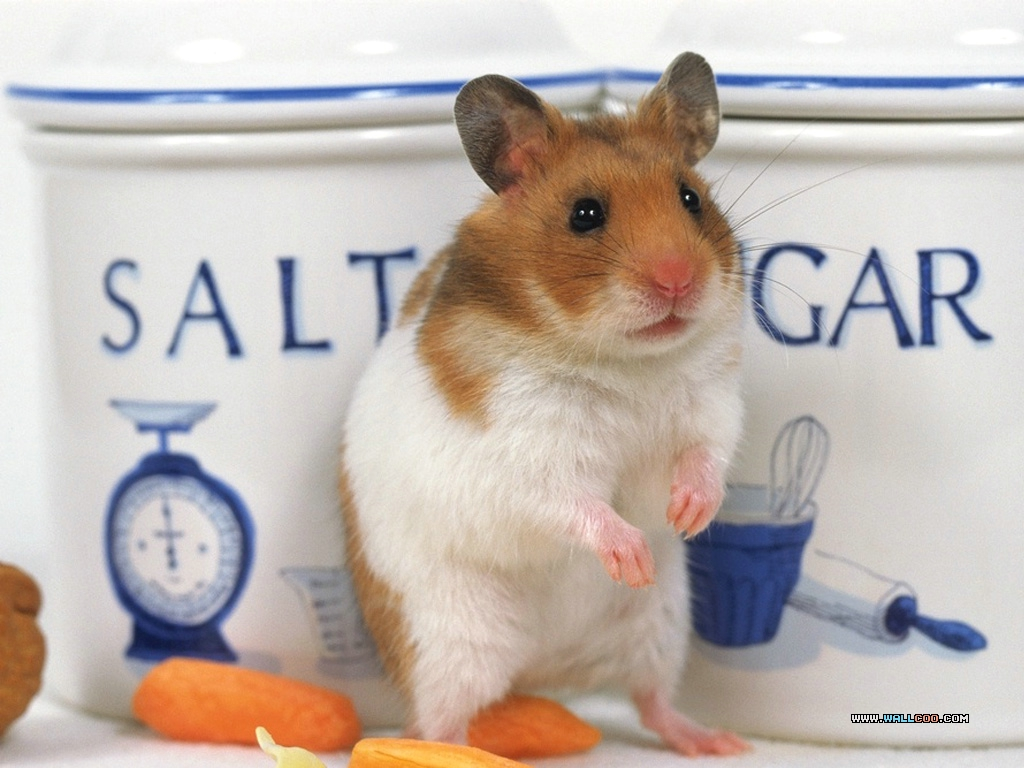
Now, let’s get to the juicy part: what’s the deal with hamsters, and why are they so incredibly popular? Well, We have got some pretty cool reasons for you:
- Endless Cuteness: Seriously, have you seen a hamster? They come in a bunch of colors and patterns that will melt your heart right away.
From the flashy black and white Syrian hamster to the quirky robo dwarf hamster, there’s a hamster for every taste out there. - Chill Companions: If you’re not looking for a high-maintenance pet, hamsters are like the champs of low-maintenance buddies.
They’re totally cool with doing their own thing and don’t need constant attention. Plus, they’re cool with flying solo, so no worries about finding them a roommate. - Fits Anywhere: Living in a cozy apartment or a compact space? Hamsters are the perfect roommates! They don’t need a ton of space and can live happily in a snug little cage.
- Tiny Entertainers: Don’t let their size fool you – hamsters are full of surprises. They’ve got these quirky personalities that will make you laugh out loud.
Whether they’re attempting an epic escape or just having a chill grooming session, they know how to keep things interesting. - Life Lessons: If you’ve got kids around, having a hamster is like having a tiny teacher in the house.
Taking care of a hamster teaches responsibility and lets them experience the joy of looking after another living being. - Instant Stress Busters: Feeling a bit overwhelmed? Spending time with a hamster can work wonders for your stress levels.
Watching them go about their adorable hamster business is like a one-way ticket to relaxation town.
So, whether you’re a seasoned pet pro or a newbie on the pet scene, hamsters have this magical way of finding their way into your heart and making themselves right at home.
Classifying Hamster Breeds
We’ll be sorting these adorable furballs based on their size, and type, and even figuring out what makes dwarf and Syrian hamsters stand out from the crowd.
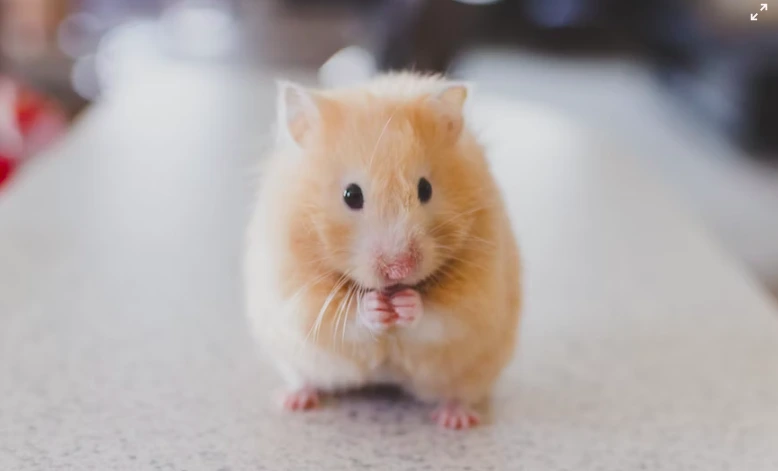
Categorizing Hamsters
Now, we’re sorting hamsters based on size and types. Here’s the lowdown:
- By Size: Hamsters come in various sizes, from the super tiny to the not-so-tiny. We’ve got the dwarfs, who are like the pocket-sized versions, and then there are the larger hamsters.
Size matters when it comes to their care and habitat needs, so knowing where your hamster falls on the size chart is key. - By Type: Just like a cool gang with different vibes, hamsters have different types. We’ve got the Syrian hamsters, also known as the teddy bear hamsters, who prefer the solo life.
Then there are the dwarf hamsters, which are like the party animals of the hamster world and often enjoy living in pairs or small groups.
Differentiating Dwarf and Syrian Hamsters
Alright, let’s dig a little deeper and learn what makes dwarf and Syrian hamsters unique:
- Dwarf Hamsters: These little fellas are like the life of the party! They’re smaller in size and come in various species like Robo dwarf, Campbell’s dwarf, and Winter White dwarf hamsters.
They’re super social and often enjoy having company, but remember, they’re known to have the occasional tiff with their buddies. So, it’s like living in a constant soap opera – drama and all! - Syrian Hamsters: Meet the teddy bears of the hamster world – the Syrian hamsters. These guys are larger and prefer their own company.
They’re like the kings and queens of their domains and like to have their space all to themselves. No roomies for these majestic creatures!
Whether you’re in the dwarf squad or the Syrian crew, each hamster has its own charm and quirks that make them special.
Syrian Hamsters
These fluffy charmers are like the kings and queens of their domains, and we’re about to dive into their physical traits, personalities, and the beautiful colors they come in. So, let’s get to know these solo superstars a little better!
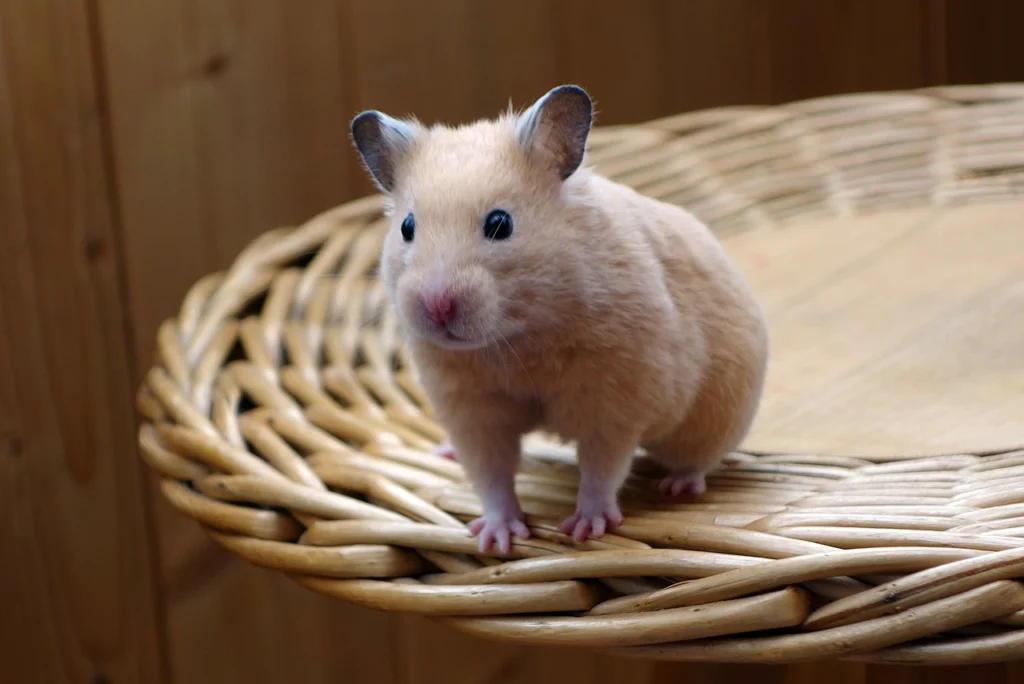
Physical Characteristics of Syrian Hamsters
A hamster that’s larger than the other hamster species. That’s the Syrian hamster for you! These cuties usually range from 5 to 7 inches in length. Here are some of their standout features:
- Larger Size: Syrian hamsters are the giants of the hamster world, with their larger body size setting them apart from their smaller counterparts.
- Unique Coat Patterns: These hamsters boast a variety of coat patterns and colors that are simply stunning. From golden browns to creamy whites, their coats are like a work of art.
- Fluffy Cheeks: Oh, those cheeks! Syrian hamsters have adorable pouches in their cheeks where they can store food. It’s like their own little snack stash.
Personality Traits and Behavior
Now, let’s dive into what makes Syrian hamsters tick in terms of personality:
- Lone Rangers: Syrian hamsters are the solo adventurers of the hamster world. They’re not big fans of sharing their living space and prefer to have their own kingdom to rule.
- Night Owls: These little night owls are most active during the evening and nighttime hours. So, if you’re a night owl too, you’ll have a perfect companion for late-night hangouts.
- Curious Explorers: Syrian hamsters are naturally curious and love to explore their surroundings. You’ll often find them scurrying around, checking out every nook and cranny.
- Bonding Potential: While they prefer a solitary life, Syrian hamsters can still form strong bonds with their human companions. With patience and care, you can build a lovely relationship with your fluffy friend.
Common Color Variations
Prepare to be amazed by the gorgeous color variations that Syrian hamsters come in. Here are some of the common hues you might come across:
- Golden: The classic golden coat is a favorite among Syrian hamster lovers. It’s like having a tiny nugget of sunshine in your home.
- Cream: Creamy-coated hamsters exude elegance and grace. Their soft colors are truly captivating.
- Grey: These little grey fluffballs have an air of sophistication about them. They’re like the James Bonds of the hamster world.
These larger-than-life furballs bring their unique charm and regal personalities to any household lucky enough to have them.
Dwarf Hamsters
Now we’ll explore the different varieties of dwarf hamsters, delve into their unique features, and sizes, and compare them.
Plus, we’ll uncover their adorable behavioral patterns and how they handle the social scene.
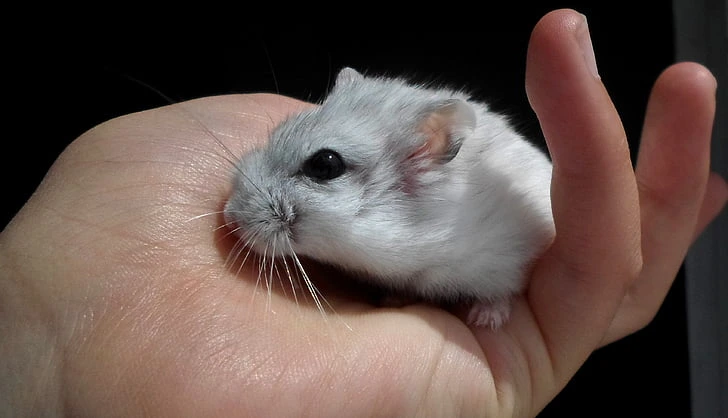
Varieties of Dwarf Hamsters
Dwarf hamsters also have different varieties so let`s explore it.
- Campbell’s Dwarf Hamsters: These little guys are like the party planners of the hamster world. They come in a range of coat colors and patterns, from agouti to sapphire. Their vibrant personalities make them a delight to have around.
- Roborovski Dwarf Hamsters: Meet the speedsters! Roborovski hamsters are known for their incredible agility and lightning-fast movements. Their sand-colored fur and tiny size make them stand out in the cuteness department.
- Winter White Dwarf Hamsters: These adorable fluffballs change their coat color with the seasons, going from a sandy hue in the summer to a snowy white in the winter. It’s like having a magical snow globe in your home!
Size, Features, and Comparisons
Let’s explore what makes dwarf hamsters special:
- Tiny Stature: Dwarf hamsters are even smaller than their Syrian cousins, usually measuring around 2 to 4 inches in length. They fit snugly in the palm of your hand!
- Distinctive Looks: Each variety has its own unique features. From the Campbell’s with its wide range of colors to the Roborovski with its sand dune appearance, and the Winter White that changes colors like a chameleon.
- Comparing Sizes: While all dwarf hamsters are small, Roborovski hamsters tend to be the tiniest, while Campbell’s and Winter Whites are slightly larger.
Behavioral Patterns and Social Aspects
Now, let’s dive into the adorable behaviors and social dynamics of these tiny wonders:
- Active Explorers: Dwarf hamsters are like little adventurers, constantly on the move and exploring their environment.
- Social Situations: While they’re social with their own kind, dwarf hamsters can sometimes have disagreements. Keeping them in same-sex pairs or groups from a young age can help build strong bonds.
- Nocturnal Magic: Like little night owls, dwarf hamsters are most active during the evening and nighttime hours. So, if you’re a night owl too, you’ve got yourself a perfect buddy.
These tiny wonders may be small in size, but they’re big in personality and charm.
Chinese Hamsters
A long time ago, in places like China and Mongolia, Chinese hamsters were living there. Scientists really liked studying these hamsters because they could easily learn new things in labs.
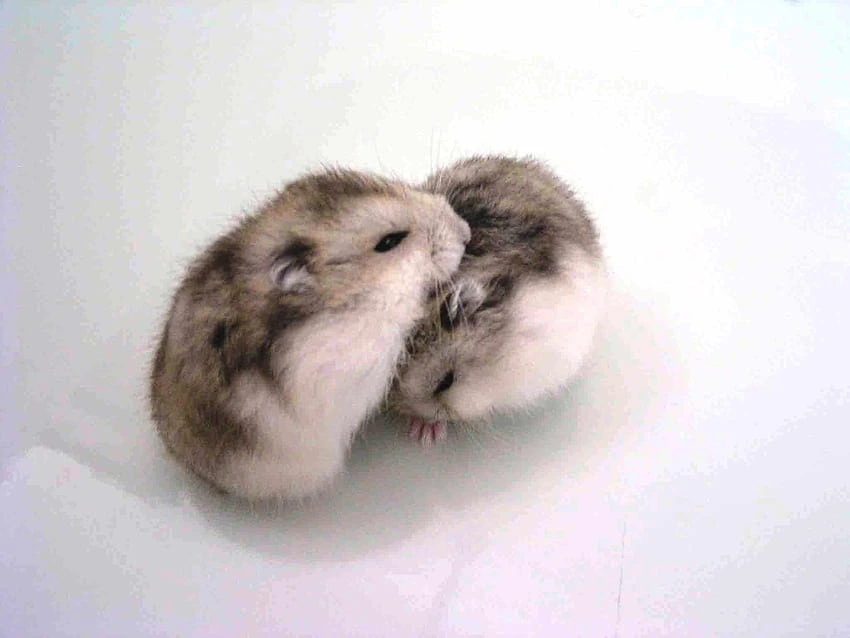
How Chinese Hamsters Look
Let’s take a closer look at what makes Chinese hamsters stand out:
- Long and Slim Bodies: Chinese hamsters have a body shape that’s different from other hamsters – it’s long and slim.
- Tails Without Fur: One special thing about them is their tails. They have tails that don’t have fur on them, which makes them look a bit like mice. But don’t worry, they’re still hamsters!
- Pretty Colors: Chinese hamsters can be different colors, like brown and gray. Some even have a beautiful blue-gray color. Their colors make them look elegant and nice.
Behaviors That Make Chinese Hamsters Unique
Now, let’s find out what Chinese hamsters are like in their behavior:
- Nighttime Explorers: Just like staying up late, Chinese hamsters are most awake and active during the night. They’re like little night owls!
- Good Climbers: These hamsters are really good at climbing things. They can go up and down and explore all around.
- Friendly and Sociable: Chinese hamsters like to be with other hamsters. They enjoy having friends of their own kind around them. It’s like they’re little social butterflies!
- Curious Creatures: Chinese hamsters are curious and like to check out new things. They’re always interested in toys, tunnels, and anything new around them.
They’re different in a cool way and have their own special things about them. Stick around as we keep learning about different kinds of hamsters and the interesting things that make them who they are.
Russian Dwarf Hamsters
Russian Dwarf Hamsters are those adorable little creatures that have won the hearts of pet lovers everywhere. From their various varieties to their charming personalities, we’ll dive into what makes these tiny wonders so special.

Overview of Russian Dwarf Hamster Varieties
Russian Dwarf Hamsters come in a few different varieties, each with its own unique traits and characteristics.
Here’s a quick rundown of the main varieties you might come across:
- Campbell’s Russian Dwarf Hamster: These cuties are known for their inquisitive nature and playful personalities. They’re often seen exploring and interacting with their environment.
- Winter White Russian Dwarf Hamster: These hamsters have a magical ability to change their coat color with the seasons. In the winter, they turn a lovely snowy white, adding a touch of enchantment to your home.
- Roborovski Russian Dwarf Hamster: If you’re looking for a burst of energy, these tiny speedsters are for you. They’re super active and have an uncanny ability to zoom around like little lightning bolts.
Size, Colors, and Coat Variations
Russian Dwarf Hamsters might be small, but they sure pack a punch when it comes to diversity:
- Petite Proportions: These hamsters are typically even smaller than other dwarf hamster species, measuring around 2 to 3 inches in length. They’re like little bundles of cuteness!
- Colorful Personalities: Russian Dwarf Hamsters come in various colors, including agouti, grey, and even sapphire blue. Their beautiful hues add an extra touch of charm.
- Coat Patterns: Depending on the variety, you might find hamsters with different coat patterns. From sleek to fluffy, their fur adds to their adorable appeal.
Temperament and Interaction
Now, let’s talk about the temperament and interaction style of these wonderful hamsters:
- Playful Personalities: Russian Dwarf Hamsters are known for being curious and playful. They love to explore their surroundings and enjoy interactive toys and tunnels.
- Taming Potential: While they might be a bit more cautious at first, with patience and gentle handling, Russian Dwarf Hamsters can become comfortable with human interaction.
- Social Dynamics: Keep in mind that Russian Dwarf Hamsters are generally more comfortable being around their own kind. If you’re planning to have multiple hamsters, make sure they’re the same gender to avoid any squabbles.
As you can see, Russian Dwarf Hamsters are like little bundles of joy that bring color, energy, and warmth into your life.
Their various varieties, charming temperaments, and unique coat patterns make them a delightful addition to any home.
Roborovski Hamsters
Roborovski Hamsters are the true acrobats of the hamster world. From their tiny size to their energetic antics, we’re delving into what makes these miniature marvels stand out.
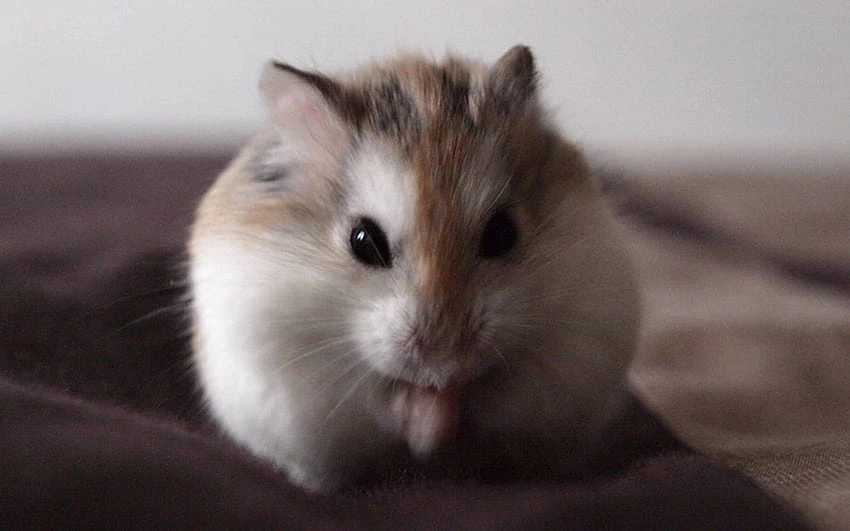
Miniature Marvels
Let’s start by taking a closer look at these incredible creatures:
- Size Matters: Roborovski Hamsters are among the smallest hamster species out there, measuring just around 2 inches in length. Talk about packing a whole lot of charm into a tiny package!
- Distinctive Looks: These little acrobats sport a sandy-brown coat with a white belly, and they have a unique stripe running down their backs. Their round eyes and perky ears give them an adorable and alert appearance.
Energetic Behaviors and Exercise Needs
Get ready to be amazed by the energetic and acrobatic behaviors of Roborovski Hamsters:
- Endless Energy: Roborovski Hamsters are like the Energizer bunnies of the hamster world – always on the move! Their boundless energy keeps them busy and entertained.
- Acrobatic Stunts: These hamsters are known for their acrobatic skills. They love to jump, leap, and even somersault around their habitat, showcasing their impressive agility.
- Exercise Enthusiasts: Roborovski Hamsters are exercise enthusiasts who need ample space to play and explore. Providing them with tunnels, wheels, and toys will keep their active minds and bodies engaged.
Care Considerations for Roborovski Hamsters
Here are some important things to keep in mind when caring for these lively little creatures:
- Spacious Homes: Roborovski Hamsters are adventurers at heart, so they’ll need a habitat that offers plenty of space for them to roam and play.
- Social Aspects: While they’re social with their own kind, it’s best to house them in same-sex pairs to prevent any conflicts.
- Nutritional Needs: A well-balanced diet of hamster pellets, fresh veggies, and occasional treats will keep these little athletes in top shape.
- Gentle Handling: Due to their small size and fast movements, Roborovski Hamsters may be a bit skittish when handled. Patience and gentleness are key when interacting with them.
Their tiny size doesn’t hold them back from showcasing incredible acrobatic feats and keeping you entertained.
Campbell’s Hamsters
Campbell’s Hamsters are adorable and playful little creatures that are bound to steal your heart.
From their charming color variations to their delightful personalities, we’re going to uncover what makes these hamsters stand out.
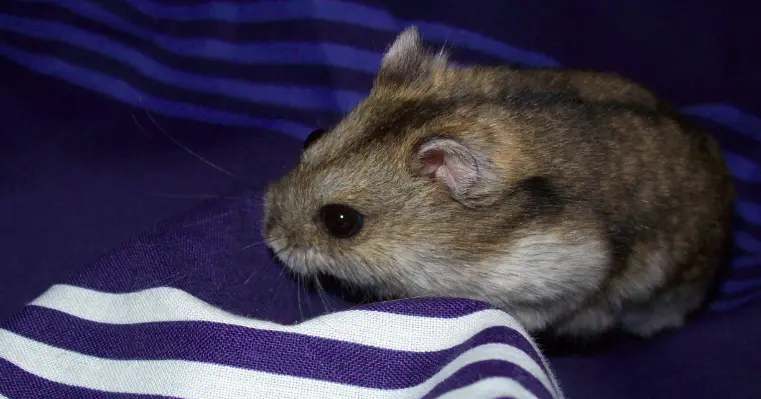
Exploring Campbell’s Hamster Color Variations
Prepare to be amazed by the colorful personalities of Campbell’s Hamsters:
- Rainbow of Hues: Campbell’s Hamsters come in a variety of beautiful colors, from sandy browns to darker agouti shades. It’s like having a mini rainbow of cuteness right in your home!
- Distinctive Patterns: Some Campbell’s Hamsters have unique patterns on their fur, adding an extra touch of individuality to each little explorer.
Personality Traits and Compatibility
Let’s get to know the personalities of these charming little creatures:
- Playful and Curious: Campbell’s Hamsters are naturally inquisitive and love to explore their surroundings. They’ll keep you entertained with their antics and curiosity.
- Social Aspects: These hamsters have a friendly nature and can do well living with a same-sex buddy. Just make sure to introduce them properly to avoid any potential squabbles.
- Interaction with Humans: With a bit of patience and gentle handling, Campbell’s Hamsters can become quite comfortable with human interaction. They’re the perfect companions for those who love engaging with their pets.
Housing and Nurturing Campbell’s Hamsters
Here are some important tips for providing the best care for your Campbell’s Hamsters:
- Cozy Homes: Campbell’s Hamsters appreciate cozy and secure habitats where they can feel safe. Providing them with tunnels, hideouts, and cozy bedding will make them feel right at home.
- Healthy Diet: A balanced diet of high-quality hamster pellets, fresh veggies, and occasional treats will keep your furry friend in top shape.
- Exercise and Playtime: These active little explorers love to run on exercise wheels and play with toys. Make sure to provide them with opportunities for physical activity and mental stimulation.
- Gentle Approach: When handling your Campbell’s Hamster, be gentle and patient. They may be a bit skittish at first, but over time, they’ll learn to trust you.
Their range of colors, friendly personalities, and compatibility with other hamsters make them an excellent choice for pet enthusiasts.
Winter White Hamsters
Winter White hamsters are adorable creatures that bring a touch of enchantment to our lives!
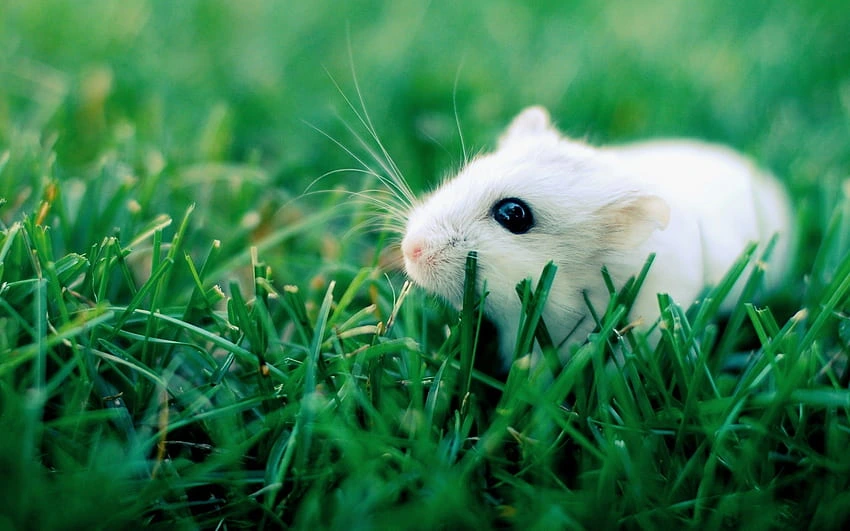
In this exploration, we’ll uncover the tale behind their name, discover their unique physical traits and their magical coat changes, and learn how to create a cozy home for them.
The Story Behind the Name
The name “Winter White” hamster comes from the fact that these hamsters change their fur color from light brown to white in the winter.
This adaptation helps them to camouflage themselves in the snow and avoid predators.
Winter White hamsters are native to the steppes of Central Asia. In the winter, the steppes are covered in snow, and the hamsters would have a hard time finding food if they were not able to camouflage themselves.
By changing their fur color, they are able to blend in with the snow and stay hidden from predators.
Physical Characteristics and Coat Changes
Now, let’s delve into the enchanting traits that set Winter White hamsters apart:
- Starting with Sand: During warmer months, these hamsters have a sandy-colored coat that blends perfectly with the summer landscape.
- Snowy Transformation: As winter arrives, something magical happens – their coats change to a beautiful snowy white. It’s like they’re dressing up for a winter ball!
- Chameleon-Like Charm: This ability to change their coat color is called “agouti-based seasonal camouflage.” It helps them blend in with their surroundings, just like how snow helps creatures hide in winter.
Creating a Comfortable Habitat
To make sure your Winter White hamster feels right at home, consider these tips for creating their perfect habitat:
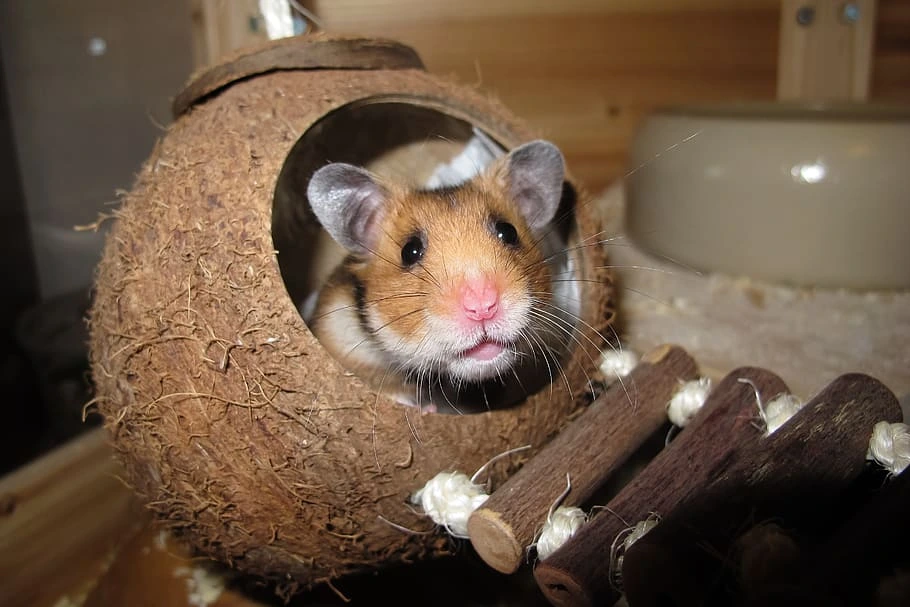
- Proper Enclosure: Choose a spacious cage with plenty of room for them to explore and play.
- Hideouts and Bedding: Provide cozy hideouts and soft bedding for them to snuggle in. They’ll appreciate having a little den to call their own.
- Toys and Enrichment: Keep them entertained with tunnels, wheels, and toys that stimulate their curious minds.
- Safe and Warm: Maintain a comfortable temperature in their habitat. Since they’re used to cold climates, avoid exposing them to extreme heat.
Their ever-changing coats and charming nature make them a delightful addition to any home.
Choosing the Right Hamster Breed
So, you’ve decided to bring a cute and cuddly hamster into your life—what an exciting decision!
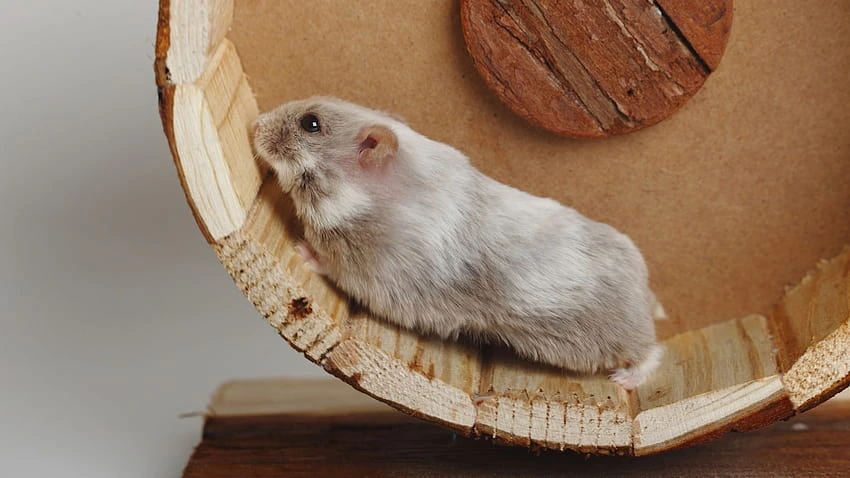
But hold on, before you rush to the pet store, it’s important to choose the right hamster breed that aligns with your lifestyle and preferences.
Factors to Consider in Selecting a Breed
1. Size Matters: Hamsters come in various sizes, from the petite Roborovski to the slightly larger Syrian hamster. Consider how much space you have available for a cage and whether you’re drawn to a smaller or more substantial hamster.
2. Activity Levels: Some hamster breeds are more active and curious than others. If you’re looking for a hamster that enjoys exploring and being on the move, breeds like the Campbell’s Dwarf or the Winter White Dwarf could be a good fit.
3. Grooming Requirements: Long-haired hamster breeds like the Teddy Bear hamster might need a bit more grooming attention to keep their fur looking its best. If you’re up for regular brushing and maintenance, these fluffy companions could be just what you’re looking for.
4. Social or Solitary: While hamsters are generally solitary creatures, some breeds are more open to social interaction than others. Roborovski hamsters, for instance, tend to enjoy the company of their own kind and might do well in pairs.
Matching Personalities and Lifestyles
1. The Busy Bee: If you have a busy lifestyle and aren’t able to spend hours interacting with your hamster, a more independent breed like the Syrian hamster might be your best choice. They’re content with some alone time and won’t get lonely easily.
2. The Playful Pal: Are you looking for a hamster that’s always ready for a game? The Chinese Dwarf hamster’s playful nature could be a perfect match. Their energetic antics will keep you entertained for hours.
3. The Night Owl: If you’re a night owl yourself, a hamster breed that’s most active during the evening, like the Roborovski hamster, could be an excellent companion. You can both enjoy the nighttime adventures together.
4. The Family-Friendly Friend: If you have kids or a family environment, the Campbell’s Dwarf hamster might be a great addition. They tend to be more social and adaptable, making them a good fit for various family dynamics.
It’s a good idea to spend time observing different breeds at a pet store or from reputable breeders.
Additionally, consider adopting from animal shelters or rescues; you might find a gem with a unique personality just waiting for a loving home.
Hamster Myths and Misconceptions
Hamsters, those adorable little bundles of fur, have captured the hearts of pet enthusiasts around the world. But along with their popularity, various myths and misconceptions have also sprung up.
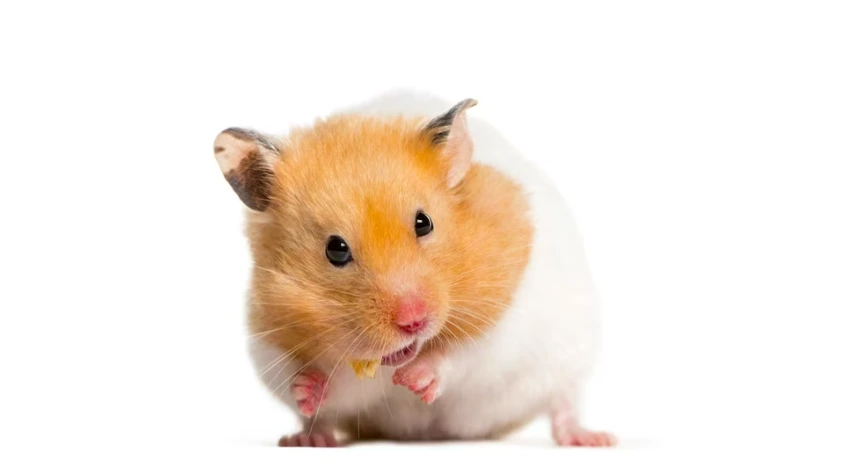
Debunking Common Misbeliefs
1. Myth: Hamsters Enjoy Living in Small Cages.
Fact: Hamsters need adequate space to roam and explore. A small cage can lead to stress, boredom, and even health issues. Opt for a spacious and appropriately designed enclosure to keep your hamster healthy and happy.
2. Myth: Hamsters Are Low-Maintenance Pets.
Fact: While hamsters might not require the same attention as a dog or cat, they still need care and interaction. Regular cleaning, fresh food and water, and mental stimulation are essential for their well-being.
3. Myth: All Hamsters Get Along with Each Other.
Fact: Hamsters are solitary animals and generally prefer to live alone. Placing them together can lead to fights and stress. It’s best to keep them in separate cages to avoid conflicts.
4. Myth: Hamsters Only Need Sunflower Seeds to Eat.
Fact: Sunflower seeds are high in fat and should be given as treats, not as a primary food source. A balanced diet of hamster pellets, fresh fruits, vegetables, and occasional protein treats is essential for their health.
5. Myth: Hamsters Don’t Need Veterinary Care.
Fact: Just like any other pet, hamsters require regular check-ups with a veterinarian. They can suffer from health issues that might not be obvious, so it’s important to have a professional monitor their well-being.
Separating Fact from Fiction
1. Myth: Hamsters Are Nocturnal, So They’re Always Awake at Night.
Fact: While hamsters are indeed more active during the night, they also have periods of wakefulness during the day. Their activity patterns can vary based on their breed and individual preferences.
2. Myth: Hamsters Don’t Need Enrichment or Toys.
Fact: Hamsters are intelligent and curious creatures. Providing them with toys, tunnels, and items to chew on keeps them mentally stimulated and prevents boredom.
3. Myth: Hamsters Can Drink Fruit Juice or Milk.
Fact: Hamsters should only drink water. Fruit juice and milk can upset their digestive system. Stick to clean, fresh water for their hydration needs.
4. Myth: Hamsters Don’t Live Very Long, So It’s Fine to Replace Them Often.
Fact: Hamsters can live for up to 2-3 years or more, depending on the breed. They form bonds with their owners and deserve love and care throughout their entire lifespan.
5. Myth: Hamsters Are a Perfect Starter Pet for Kids.
Fact: While hamsters can make lovely pets, they require responsible care and handling. Children should be supervised and educated about proper hamster care to ensure the well-being of both the child and the pet.
Summary
In our journey through the world of hamster breeds, we’ve uncovered a plethora of information that will help you make informed decisions about bringing these delightful creatures into your life.
From choosing the right breed to debunking myths and misconceptions, let’s recap the key takeaways.
Choosing the Right Hamster Breed
When selecting a hamster breed, keep these factors in mind:
- Size: Consider the available space for your hamster’s cage and choose a breed that fits comfortably.
- Activity Levels: Different breeds have varying activity levels. Match your hamster’s energy to your lifestyle.
- Grooming Needs: Long-haired breeds may need more grooming attention.
- Social Interaction: Some breeds are more sociable and can be paired, while others prefer solitude.
Hamster Myths and Misconceptions
Unveiling the truth about hamsters, we learned:
- Hamsters need space and appropriate enclosures to thrive.
- They require care, interaction, and mental stimulation.
- Solitary living is ideal, as hamsters often do not get along when housed together.
- A balanced diet and regular veterinary care are essential for their well-being.
- Hamsters are intelligent and deserve responsible care and proper handling.
By understanding the various breeds and separating fact from fiction, you’re equipped to provide the best possible care for your furry friend.
From the bustling Roborovski to the sociable Campbell’s Dwarf, each hamster breed offers a unique companionship experience.
You can explore further information on RSPCA or ASPCA related to your pet.
So, go ahead and welcome your new hamster companion into your life with open arms and an understanding heart. Happy hamster parenting!
FAQs
Q1: What's the Best Hamster Breed for Beginners?
Syrian hamsters are often recommended for beginners due to their solitary nature and relatively larger size, making them easier to handle and care for.
Q2: Can Different Hamster Breeds Live Together?
Hamsters are generally solitary creatures and are best kept alone. Attempting to house different breeds together can lead to fights and stress.
Q3: Do All Hamster Breeds Have Similar Lifespans?
No, lifespans vary by breed. Syrians usually live 2-3 years, while some dwarf breeds may live up to 3-4 years with proper care.
Q4: Are All Hamster Breeds Equally Active?
No, activity levels vary. For instance, the Roborovski hamster is highly active and agile, while the Syrian hamster tends to be more leisurely.
Q5: Do Hamsters Need Specialized Grooming?
Long-haired breeds like Teddy Bear hamsters require more grooming due to their fur. Regular brushing can prevent tangles and matting.
Q6: Can I Keep Hamsters of Different Breeds in Separate Cages Together?
Hamsters generally prefer solitary living. It's best to keep them in separate cages to prevent conflicts and ensure their well-being.
Q7: Can Hamsters Eat a Diet of Only Sunflower Seeds?
No, a diet solely based on sunflower seeds lacks essential nutrients. Hamsters need a balanced diet of pellets, fresh fruits, vegetables, and protein treats.
Q8: Are Hamsters Nocturnal or Active During the Day?
Hamsters are crepuscular, meaning they're most active during dawn and dusk. However, their specific activity patterns can vary by breed.
Q9: Can Children Safely Handle Hamsters?
Yes, but supervision is crucial. Children should be educated about gentle handling and proper care to ensure both their safety and the hamster's well-being.
